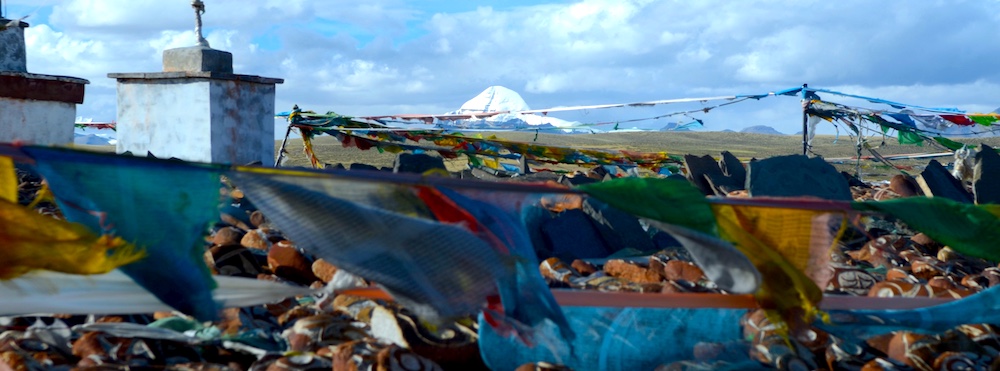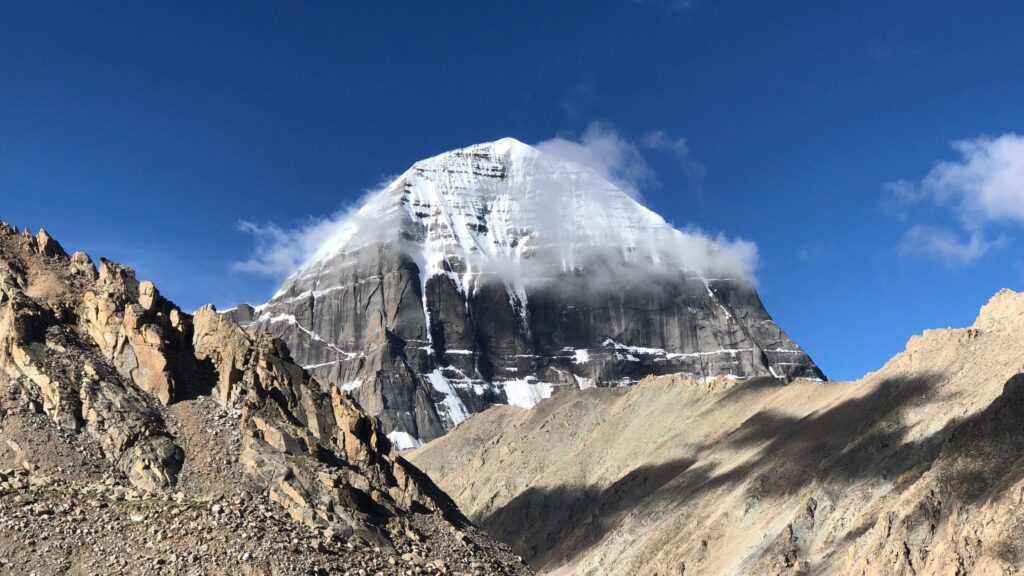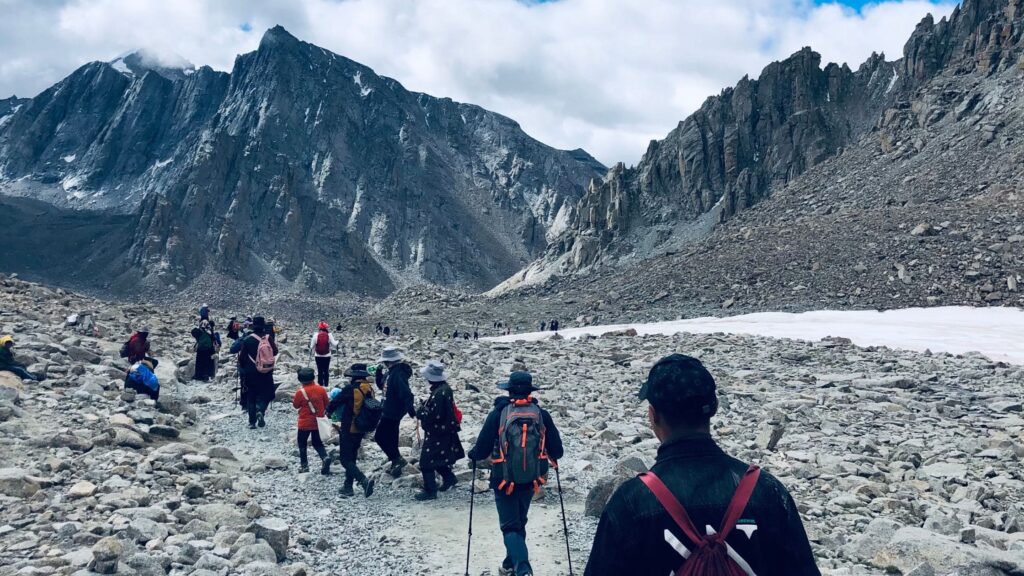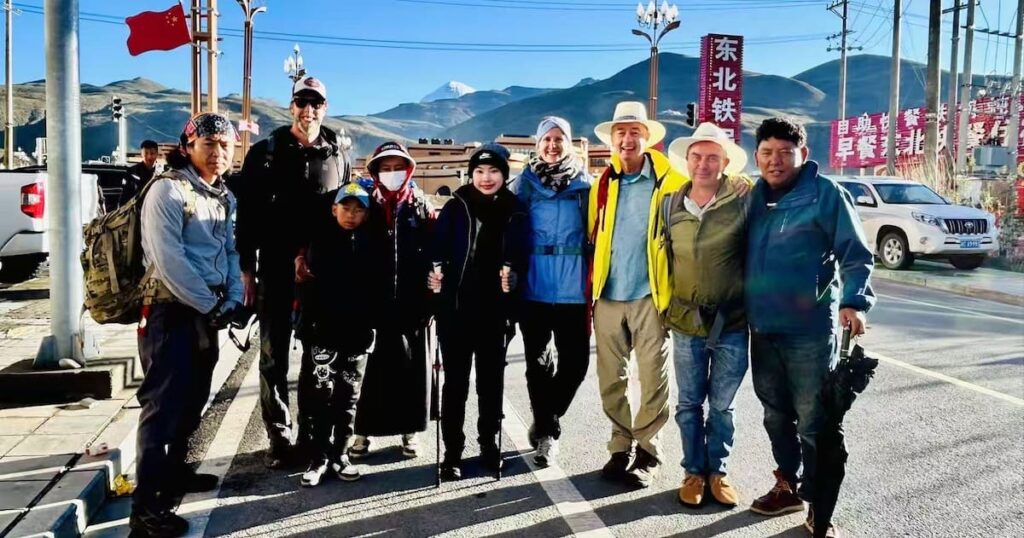A summer trip to Mount Kailash in Tibet is more than just a high-altitude adventure—it’s a deeply spiritual and awe-inspiring journey through some of the most sacred and remote landscapes on Earth. Rising majestically to 6,638 meters (21,778 feet), Mount Kailash is revered by Hindus, Buddhists, Jains, and followers of Bon as the center of the universe. For travelers seeking an unforgettable Tibet tour, a Kailash tour in the summer offers the best conditions for pilgrimage, trekking, and cultural immersion.

In this blog post, we’ll explore what makes a Mount Kailash trip in summer so special, what to expect during your journey, and how to prepare for this once-in-a-lifetime adventure.
Why Visit Mount Kailash in Summer?
Summer, especially from May to September, is considered the best time for a Mount Kailash trip. During these months, the weather is comparatively mild and stable, with clear skies that allow for stunning views of the snow-clad peak and surrounding landscapes.
• Weather: Temperatures range from 5°C to 15°C during the day, though it can be colder at night. The air is thinner at high altitude, but snow and ice are less likely to block roads and trails.
• Festivals: The summer season aligns with significant Tibetan religious festivals such as Saga Dawa, which celebrates the birth, enlightenment, and death of Lord Buddha. Thousands of pilgrims gather around Mount Kailash during this period, adding a vibrant spiritual energy to the Kailash tour.
• Trekking Conditions: Summer offers the best trekking conditions for completing the Kora—the sacred 52-kilometer circumambulation around the mountain.

Spiritual Significance of Mount Kailash
Mount Kailash is not just a physical destination; it is a spiritual beacon. Here’s why it holds immense religious importance:
• Hinduism: Believed to be the abode of Lord Shiva, Mount Kailash is a major pilgrimage site. Bathing in the nearby Lake Manasarovar, the highest freshwater lake in the world, is thought to cleanse one’s sins.
• Buddhism: Tibetan Buddhists believe Mount Kailash is the home of Demchok, a wrathful manifestation of Buddha, and that walking the Kora erases the sins of a lifetime.
• Jainism: Considered the site where the first Tirthankara, Rishabhadeva, attained enlightenment.
• Bon Religion: Followers perform the Kora counter-clockwise and believe Mount Kailash is the seat of spiritual power.
A Kailash tour is a rare opportunity to witness and participate in sacred rituals practiced by pilgrims from different spiritual traditions.

Itinerary Overview of a Mount Kailash Trip
A typical Mount Kailash trip lasts between 13 and 18 days, depending on the starting point and the acclimatization schedule. Below is a sample itinerary for a Tibet tour that includes Mount Kailash:
Day 1-3: Arrival in Lhasa
• Fly into Lhasa, the capital of Tibet.
• Visit iconic sites: Potala Palace, Jokhang Temple, and Barkhor Street.
• Rest and acclimatize to the high altitude (3,656 meters / 12,000 feet).
Day 4-6: Drive to Shigatse and Saga
• Travel through scenic landscapes via Yamdrok Lake, Gyantse, and Shigatse.
• Visit Tashilhunpo Monastery, the seat of the Panchen Lama.
• Continue to Saga, the gateway to western Tibet.
Day 7-8: Lake Manasarovar and Darchen
• Reach Lake Manasarovar, a sacred lake for purification rituals.
• Continue to Darchen, the base camp for Mount Kailash Kora.
Day 9-11: Kailash Kora Trek
• Day 1: Darchen to Dirapuk Monastery (~20 km)
• Walk along the valley with views of Mount Kailash’s northern face.
• Day 2: Dirapuk to Zuthulphuk via Dolma La Pass (5,630 m)
• This is the most challenging part of the Kora.
• Day 3: Zuthulphuk back to Darchen (~12 km)
• A more relaxed trek back to the starting point.
Day 12-15: Return Journey
• Return to Lhasa or continue to the Nepal border (Gyirong) for cross-border travel.

Preparing for a Kailash Tour
A Kailash tour is demanding and requires thorough preparation. Here’s what you should consider:
1. Physical Fitness
• The Kora trek involves long walks at high altitudes, including steep ascents and descents.
• Engage in cardio training and altitude conditioning exercises before the trip.
2. Acclimatization
• Spend several days in Lhasa and other towns to acclimate before reaching Kailash.
• Consider medication like Diamox (under medical advice) to reduce the risk of altitude sickness.
3. Essential Packing List
• High-quality trekking boots
• Warm layers (thermal innerwear, fleece, down jacket)
• Rain gear
• Sleeping bag (some guesthouses are basic)
• Reusable water bottle and purification tablets
• Energy snacks and glucose powder
• Sunglasses, sunscreen, and lip balm
• Personal medications and a basic first-aid kit
4. Permits and Documentation
• Foreign travelers need a Tibet Travel Permit, Aliens’ Travel Permit, and Military Permit to visit Mount Kailash.
• A Tibet travel agency usually arranges these.
• A group tour is mandatory for international tourists.
Cultural Etiquette and Respect
While on a Tibet tour, especially a Mount Kailash trip, it’s essential to observe local customs and show respect for religious traditions:
• Walk clockwise during the Kora (unless you follow the Bon religion).
• Don’t climb Mount Kailash—it is considered sacrilegious.
• Avoid pointing your feet at religious objects or turning prayer wheels the wrong way.
• Ask permission before photographing pilgrims or monks.

Accommodation and Food
During your Kailash tour, especially on the Kora, accommodations are basic:
• Guesthouses and Monastery Stays: Dorm-style beds, limited hot water, shared toilets.
• Meals: Simple Tibetan dishes like tsampa, noodles, soups, and yak meat are available. Bring snacks for extra energy.
• In Lhasa and Shigatse: You’ll find a wide range of hotels and restaurants offering Tibetan, Chinese, and even Western food.
Highlights of the Kailash Summer Trip
• Sunrise over Mount Kailash: Witness the golden glow illuminating the sacred peak from Dirapuk.
• Pilgrimage Encounters: Interact with pilgrims from across Asia and observe traditional prostration practices.
• High Pass Crossing: The view from Dolma La Pass is breathtaking and spiritually profound.
• Lake Manasarovar Rituals: Join or witness devotees taking a holy dip or performing meditations beside the lake.
Conclusion
A summer trip to Mount Kailash in Tibet is not just an expedition—it is a transformational journey that blends physical endurance, spiritual depth, and cultural exploration. The sacred mountain stands as a timeless symbol of divinity, drawing travelers into a realm where nature and spirituality merge seamlessly.
Whether you’re a devout pilgrim, an adventurer, or a cultural enthusiast, a Kailash tour offers an unmatched opportunity to experience the heart of the Himalayas. Plan your Tibet tour wisely, travel respectfully, and be ready for a journey that will leave a lasting impression on your soul.
